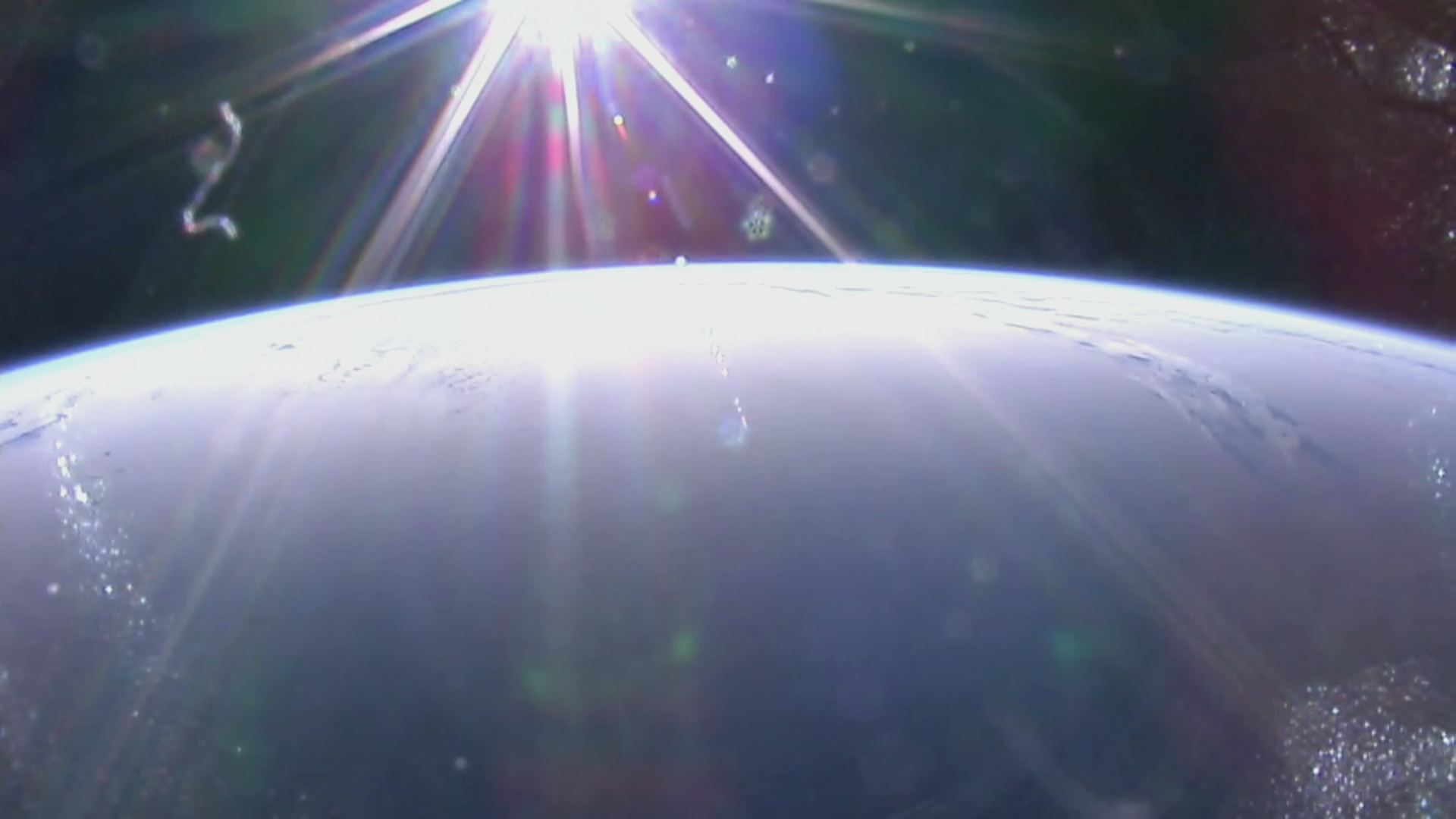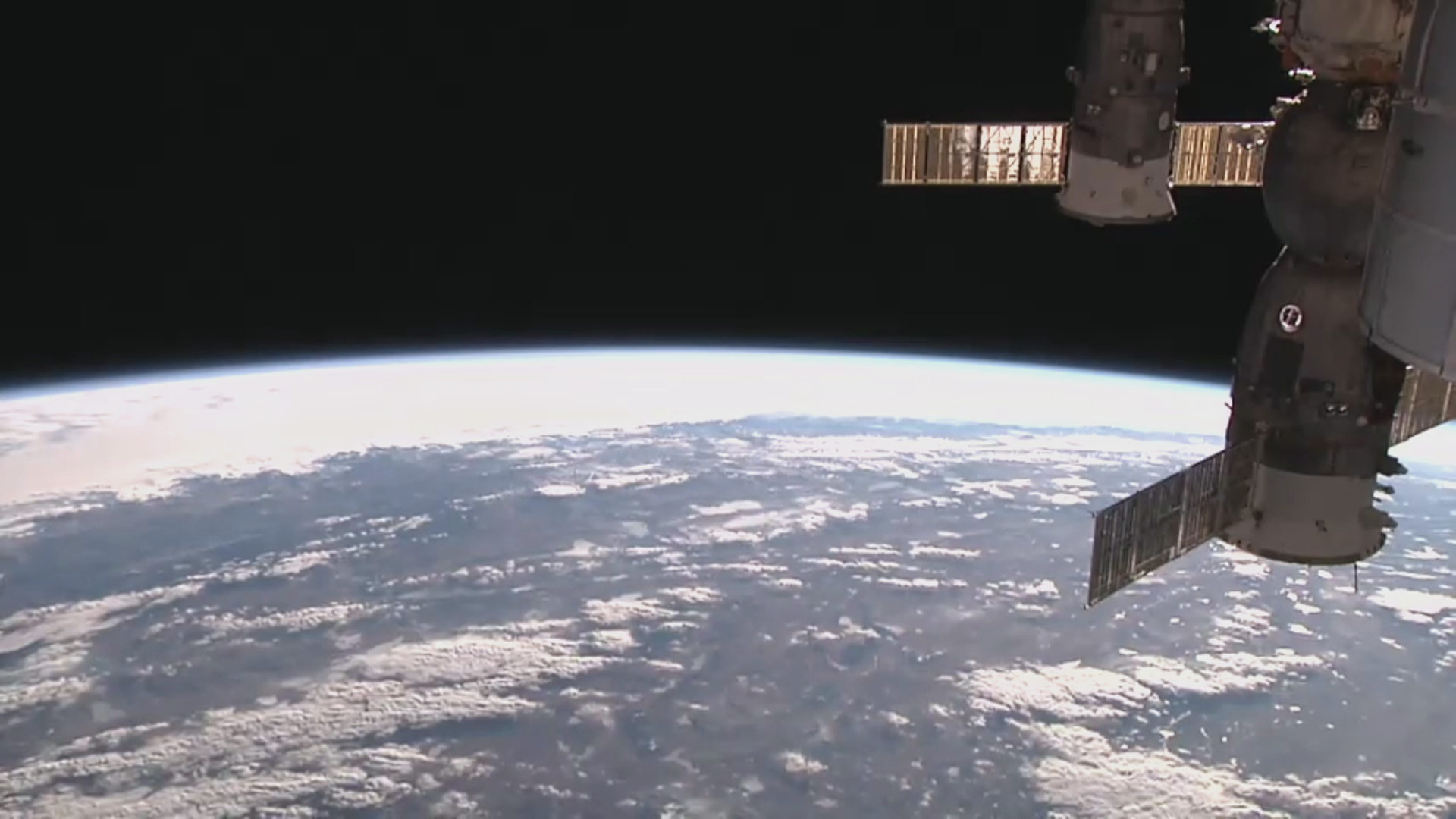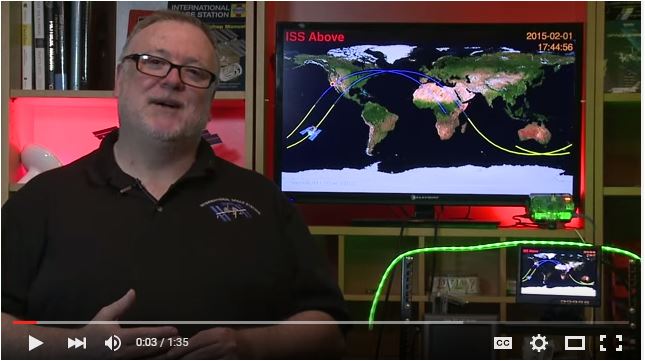Your Quick Guide to the ISS-ABOVE
What is the ISS-Above?
Where is the Space Station right now? How fast it is going? When will it be in my skies. Can I see it? When? Who's on board?
These are just some of the questions that the ISS-ABOVE answers. When you have one in your home, school or office, it's an ever-present reminder of the International Space Station (ISS), its location, the humans onboard, the view of the Earth “from there” and facts and figures about this most significant of human scientific achievements.
DOWNLOAD a brochure.
The ISS-ABOVE is an electronic device that brings the Space Station to your TV. With informational screens and live views of Earth from external cameras, you’ll discover:
On Jun 21 2015 the International Space Station made a visual pass across southern California and it passed very close to Venus, Jupiter and the Moon.
Here is the pass data from heavens-above.com This video is REAL TIME - captured using a Sony EX3 camera set on a slow shutter mode where each frame is a combination of 16 frames.
- The Space Station passes you by 5-8 times every single day
- When and where to look to see the Space Station - it's visible when the solar panels catch the light, so around dusk and dawn. The ISS-Above tells you when and where to look, both by flashing like crazy and displaying information about the pass on the info screens
- Who’s up there right now - each Expedition typically had a crew of 6 and lasts 6 months. Three astronauts change out every 3 months so there's continuity for the crew
- What the orbit of the Space Station looks like and where it is right now - at a glance you can see the ISS image on the world map. As the ISS always travels from West to East, you'll be able to see when it is in darkness, when in daylight and what part of the Earth it's over right now
- Lots of stats and data about the Space Station
- What the astronauts see when they look out of the cupola - the ISS-ABOVE streams live video from the external cameras on the Space Station whenever the ISS is in sunlight. That's 46 minutes out of every 92.
“People have sat silent on my sofa with their hands over their mouths – staring at this unprecedented achievement of mankind.”
Some views from the ISS (as displayed on your TV by the ISS-ABOVE)
What's Special About the ISS?
The International Space Station (ISS) is the only human-habitable environment off the surface of the Earth. It's also one of the biggest single human scientific achievements.
Crew missions started in 2000 conducting experiments, making observations and adding to our knowledge about how to survive in space and contributing to all kinds of scientific breakthroughs in many areas.
- ISS is larger than a six-bedroom house
- ISS has an internal pressurized volume equal to a Boeing 747
- The solar array wingspan 240 ft, is longer than a Boeing 777
- Fifty-two computers control the systems on the ISS
- More than 115 space flights were conducted during the station’s construction
- More than 100 telephone-booth-sized rack facilities operate the spacecraft systems and research experiments
- The ISS weighs almost one million pounds - equivalent of more than 320 automobiles
- The ISS is almost the length of a football field including the end zones
- 3.3 million lines of software code on the ground support 1.8 million lines of flight software code.
- Eight miles of wire connects the electrical power system
For more information, visit the facts and figures pages at NASA.
Liam Kennedy - why he invented the ISS-ABOVE!
It blinks.. and tweets... and displays live views of the earth from the ISS. It's pretty much mission control for the ISS on your own TV. Close to 900 of these devices are already in use around the world. It's Bill Nye The Science Guys - "Latest Obsession" (see below). Get one and find out why.
What do I see on my ISS-ABOVE?
- Informational screens: orbits, speed, position, current crew, news updates
- Live video from the Space Station external cameras when in daylight
What do I get?
- ISS-ABOVE software which tracks the ISS
- For members of The Planetary Society, the ISS-ABOVE will also track the LightSail when it launches in May 2016
- Raspberry Pi – Model 2 B in its own transparent case, with power supply
- PiGlow flashing RGB LED display
- Quick-Start guide
- Web site to manage your ISS-ABOVE
Is it easy to set up?
Connect it to a router and to a TV.
Manage settings such as:
- Your location
- How long different screens show
- Your tweet message to the Space Station
- Turning off the LED lights (e.g. so as not to disturb the neighbors at 3am)
““My most recent obsession is this gizmo called ISS-Above… I watch it all day. I leave it on more than is reasonable. It’s just a beautiful thing.” Bill Nye, The Science Guy”







